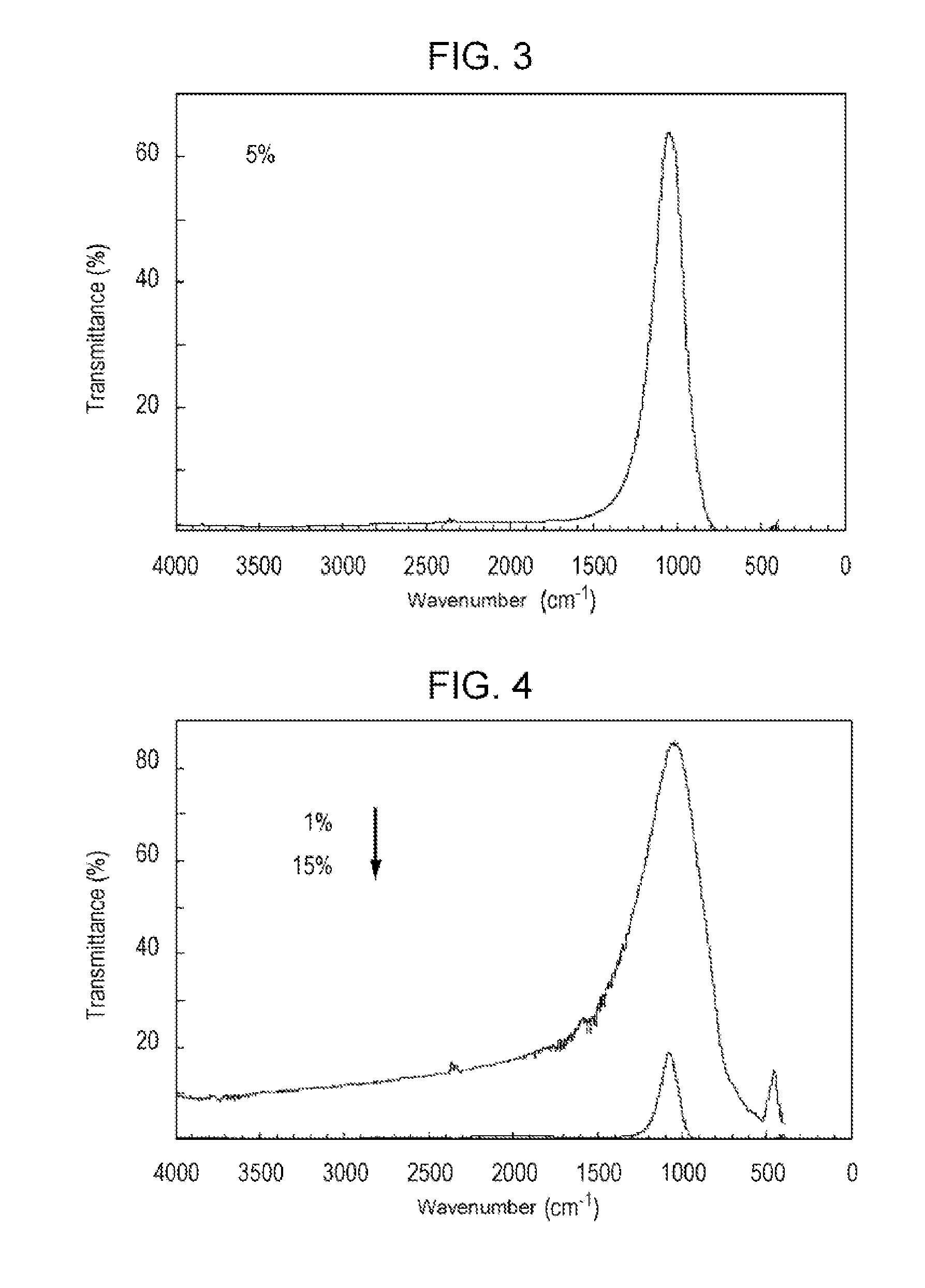Rutile-type titanium oxide crystal and mid-infrared filter using the same
a technology of titanium oxide and crystals, applied in the field of rutile-type titanium oxide, can solve the problems of poor versatility, high production cost, high production cost, etc., and achieve the effects of narrow range, easy dispersion or mixing, and easy dispersion
- Summary
- Abstract
- Description
- Claims
- Application Information
AI Technical Summary
Benefits of technology
Problems solved by technology
Method used
Image
Examples
example 1
Synthesis of 1-Ti—Mn 500 Doped with Manganese Ion
[0072]To prepare a complex solution of polyethylimine / manganese ion (A solution, molar ratio of imine / Mn: 500), 0.93 ml of 0.1 M Mn(NO3)2 was added to 100 ml of 2 wt % polyethylimine (SP 200 manufactured by NIPPON SHOKUBAI CO., LTD., molecular weight: 10000). In addition, 28% ammonia water was added dropwise to a titanium lactate solution (TC 310 manufactured by Matsumoto Pharmaceutical Manufacture Co., Ltd., 20 vol %) to prepare an aqueous solution (B solution) having a pH of 9. Ten milliliters of A solution was slowly added dropwise to 100 ml of B solution at room temperature (25° C.) under stirring. After about one hour, a large amount of precipitate was produced from the mixed solution. The precipitate was filtered, washed with water, and then dried at room temperature to obtain 8.2 g of light yellow powder (precursor). In the XRD pattern of the precursor powder, a strong X-ray diffraction peak that indicates a layered structure a...
example 2
Synthesis of Titanium Oxide Doped with Manganese Ion, 2-Ti—Mn 500
[0075]By the same method as in Example 1, 2-Ti—Mn 500 was prepared, except that the calcination temperature was changed to 1100° C. FIG. 5 shows the FT-IR spectrum of a plate prepared by mixing the sample (5%) with KBr through grinding. By increasing the calcination temperature, the transmission peak top of infrared rays showed a tendency to slightly shift to the shorter wavelengths. The center wavelength was 9.46 nm, the half-width was 1.89, and the transmittance was 50%.
example 3
Synthesis of Titanium Oxide Doped with Iron Ion
[0076]A rutile-type titanium oxide doped with an iron ion was obtained by performing the synthesis of a precursor and calcination in the air atmosphere (800° C.) under the same conditions as in Example 1, except that Fe(NO3)2 (in the polymer metal complex, the molar ratio of ethyleneimine / iron was 1 / 25, 1 / 200, and 1 / 500) was used instead of Mn(NO3)2 in Example 1. Table 1 shows three titanium oxides having different doping amounts (the iron ion content is an equivalent value on a Fe2O3 basis).
TABLE 1Sample nameTi—FeTi—FeTi—Fe25200500Iron ion content measured by X-ray3.710.480.19fluorescence analysis (%)
[0077]It was confirmed from XRD measurement that these three titanium oxide crystals were crystals that agree with a rutile structure. FIG. 6 shows the FT-IR spectrum of each of the samples (5% in KBr). As the doping amount of Fe increased, the transmittance of infrared rays tended to increase while at the same time the transmission peak w...
PUM
 Login to View More
Login to View More Abstract
Description
Claims
Application Information
 Login to View More
Login to View More - R&D
- Intellectual Property
- Life Sciences
- Materials
- Tech Scout
- Unparalleled Data Quality
- Higher Quality Content
- 60% Fewer Hallucinations
Browse by: Latest US Patents, China's latest patents, Technical Efficacy Thesaurus, Application Domain, Technology Topic, Popular Technical Reports.
© 2025 PatSnap. All rights reserved.Legal|Privacy policy|Modern Slavery Act Transparency Statement|Sitemap|About US| Contact US: help@patsnap.com



